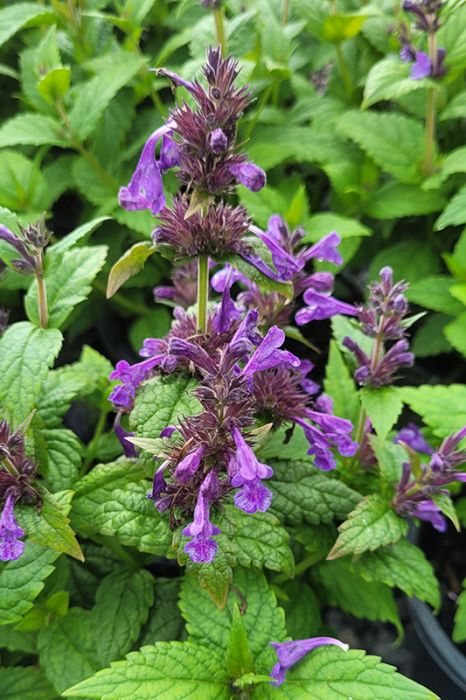Top Ten Perennials for Pollinators
Sandy's Top Ten Perennials to attract pollinators!




A compact, upright cultivar with very large, blue flowers. Will rebloom if deadheaded. A different species with a different look from other catmint.
Discover an unparalleled selection of perennials at Gertens! With the largest variety in Minnesota, we offer endless options of colorful perennials, natives, and pollinator plants to beautify your garden year after year. From vibrant flowers to lush foliage, our perennials are perfect for adding beauty and charm to your outdoor space. Visit Gertens today and see why we're known as Minnesota's Destination Garden Center!
Neptune Catmint | Nepeta kubanica 'Bokratune'
Plant Height: 8 inches
Flower Height: 12 inches
Spacing: 10 inches
Sunlight: full sun to part shade
Hardiness Zone: 4b
Description:
A showy selection with very large tubular blooms of violet blue from early to late summer, on compact, stout stems cloaked with large serrated foliage; not prone to flop and will bloom in waves all summer; perfect for patio containers and border fronts
Ornamental Features
Neptune Catmint has masses of beautiful spikes of lightly-scented blue flowers with violet overtones and deep purple calyces rising above the foliage from early to late summer, which are most effective when planted in groupings. Its large fragrant pointy leaves remain green in color throughout the season.
Landscape Attributes
Neptune Catmint is a dense herbaceous perennial with a mounded form. Its relatively fine texture sets it apart from other garden plants with less refined foliage.
This plant will require occasional maintenance and upkeep, and is best cleaned up in early spring before it resumes active growth for the season. It is a good choice for attracting bees and butterflies to your yard, but is not particularly attractive to deer who tend to leave it alone in favor of tastier treats. Gardeners should be aware of the following characteristic(s) that may warrant special consideration;
Neptune Catmint is recommended for the following landscape applications;
Planting & Growing
Neptune Catmint will grow to be about 8 inches tall at maturity extending to 12 inches tall with the flowers, with a spread of 12 inches. When grown in masses or used as a bedding plant, individual plants should be spaced approximately 10 inches apart. Its foliage tends to remain low and dense right to the ground. It grows at a fast rate, and under ideal conditions can be expected to live for approximately 10 years. As an herbaceous perennial, this plant will usually die back to the crown each winter, and will regrow from the base each spring. Be careful not to disturb the crown in late winter when it may not be readily seen!
This plant does best in full sun to partial shade. It is very adaptable to both dry and moist locations, and should do just fine under typical garden conditions. It is not particular as to soil type or pH. It is highly tolerant of urban pollution and will even thrive in inner city environments. This is a selected variety of a species not originally from North America. It can be propagated by division; however, as a cultivated variety, be aware that it may be subject to certain restrictions or prohibitions on propagation.
Neptune Catmint is a fine choice for the garden, but it is also a good selection for planting in outdoor pots and containers. It is often used as a 'filler' in the 'spiller-thriller-filler' container combination, providing a mass of flowers against which the thriller plants stand out. Note that when growing plants in outdoor containers and baskets, they may require more frequent waterings than they would in the yard or garden. Be aware that in our climate, most plants cannot be expected to survive the winter if left in containers outdoors, and this plant is no exception. Contact our experts for more information on how to protect it over the winter months.
| Common Family Name | Catnip |
|---|---|
| Gerten Grown Plants | Gerten Grown Plants |
| Available for Pre-Order | Yes |
| Sun Preference | Full-Sun, Part-Sun |
| Bloom Time | July, August, September |
| Mature Spread (Range) | Under 12" |
| Mature Height (Range) | 7-12" |
| USDA Hardiness Zone | 4, 5, 6, 7, 8, 9 |